The battle of the single-board computers (SBCs) is increasingly fierce, with more and more models appearing on the market in recent years. Another contender from Orange Pi is the Orange Pi 3B, a single-board computer (SBC) that offers powerful performance, especially for applications related to artificial intelligence (AI) and the Internet of Things (IoT). Although Raspberry Pi still has the advantage thanks to its popularity in the community and the large amount of support and documentation, the Orange Pi 3B offers something that shakes everything up: a low price.
However, it doesn’t stop there, as there are high-speed ports, an M2 storage slot, and energy-saving secondary cores. In addition to the affordable price, the 3B comes with a variety of great features. In this article, we’ll take a closer look at the details that can make all the difference in deciding if the Orange Pi 3B is the SBC for you!
Features
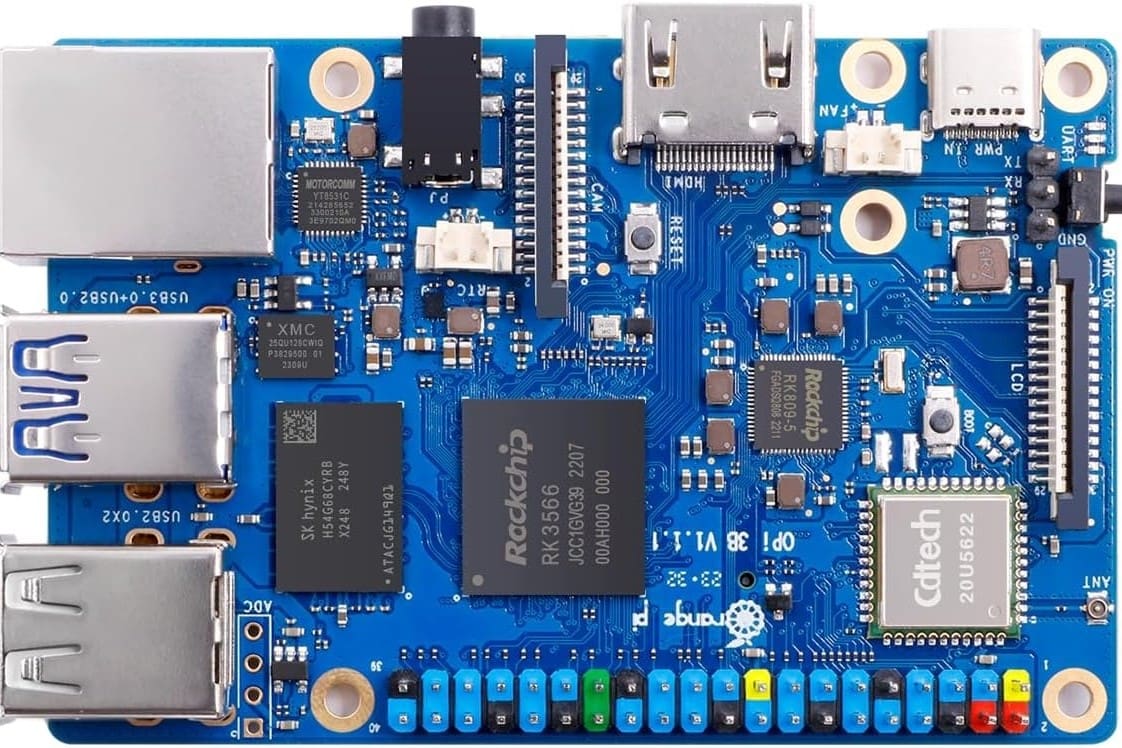
Even though it’s a cheaper alternative to some more popular SBCs, the Orange Pi 3B has powerful features to offer. Let’s take a look at the main ones:
Processor
The Rockchip RK3566 processor has four 1.8 GHz cores housed in a 64-bit architecture with 22 nm lithography. This may not seem particularly noteworthy, but it offers a powerful performance for portable devices, for example.
In addition to an ARM Mali 2EE G52 graphics processing unit, there’s also an NPU (Neural Processing Unit) with a computational power of 0.8 Tops, a VPU (Video Processing Unit) with 4K video decoding capability at 60 fps, and a PMU (Power Management Unit), which are a perfect match for machine learning and AI applications.
Connectivity
As expected in a device aimed at IoT applications, the ports and interfaces are plentiful, and the 3B has a 40-pin GPIO header. The U.FL/IPEX connector for the Bluetooth and Wi-Fi 5 antenna with BLE provides good performance in terms of the quality of wireless communications, and there are other little things to help, such as RTC connectors and a 5V fan. The HDMI output is full-size, and we also have MIPI DSI and CSI connections for the display and camera, respectively. Additionally, there’s an eDP 1.3 display port on the bottom of the board.
Flexible Storage
Space and speed are the main strengths here, and in addition to the traditional SD card slot, we have two other interesting options. The first is the eMMC socket with a capacity of up to 256 GB and speeds of approximately 160 MB/s. This is quite reasonable compared to the SD card slot, which only reaches 65 MB/s, as we’ll see below. The second is the M.2 M-Key slot for NVMe SSD. As it’s a PCIe 2.0 interface, the theoretical maximum speed is around 500 MB/s, but this is already great, low-cost data storage.
Reviews
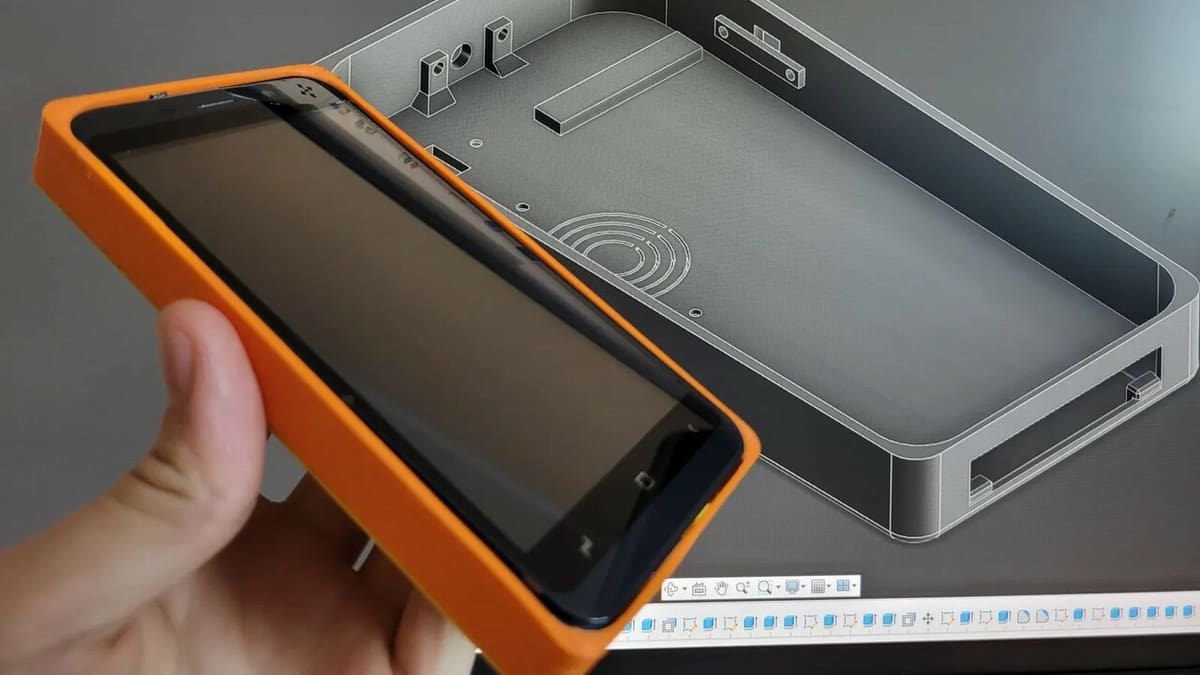
It’s time to take a closer look to see what others are saying about the Orange Pi 3B.
Shenzhen Xunlong Software, the company behind Orange Pi, has been striving to stand out in a sea of low-cost SBCs. However, the previous Orange Pi 3 didn’t leave a good impression by performing slower than expected in various tests. Lower prices are always nice to see. However, without reasonable video performance, it can become frustrating.
Perhaps that’s why Shenzhen has worked so hard on its operating systems and software to overcome this barrier at a low cost. With the new version of the Orange Pi 3B, the RK3566 processor brought significant improvements. However, they’re still not enough to make this SBC a good alternative for graphic applications, videos, and games. The slowness in some video-related points is still noticeable, as reported by Gary in his review on the ExplainingComputers YouTube channel.
Even though it’s not an option with great graphical power, this SBC has enormous potential for low-cost IoT and AI applications that require good storage performance. After all, its M.2 slot reaches speeds of up to 346 MB/s, as noted in speed tests. It’s easy to understand why Orange Pi boards are becoming a great low-cost alternative for projects like the smartphone in the photo above. The designer ferferite made a smartphone case for their Orange Pi 3B board on Printables.
Although Orange Pi boards are similar to Raspberry Pi boards, they have their differences and are aimed at lower costs. For example, on the Orange Pi 3B, we see only one USB 3.0 port and three other USB 2.0 ports. While Raspberry Pi attracts many users due to its large community with extensive support and documentation, Shenzhen seeks to compensate by offering a wide variety of operating systems, including Orange Pi OS, Ubuntu, Debian, and Android. Linux distributions vary widely in performance, so it’s necessary to test which one suits your case better. In other reviews, such as those from allgoblog and MicroLinux, the systems recently showed reasonable performance, even when using a heavier system like Fedora.
Specs
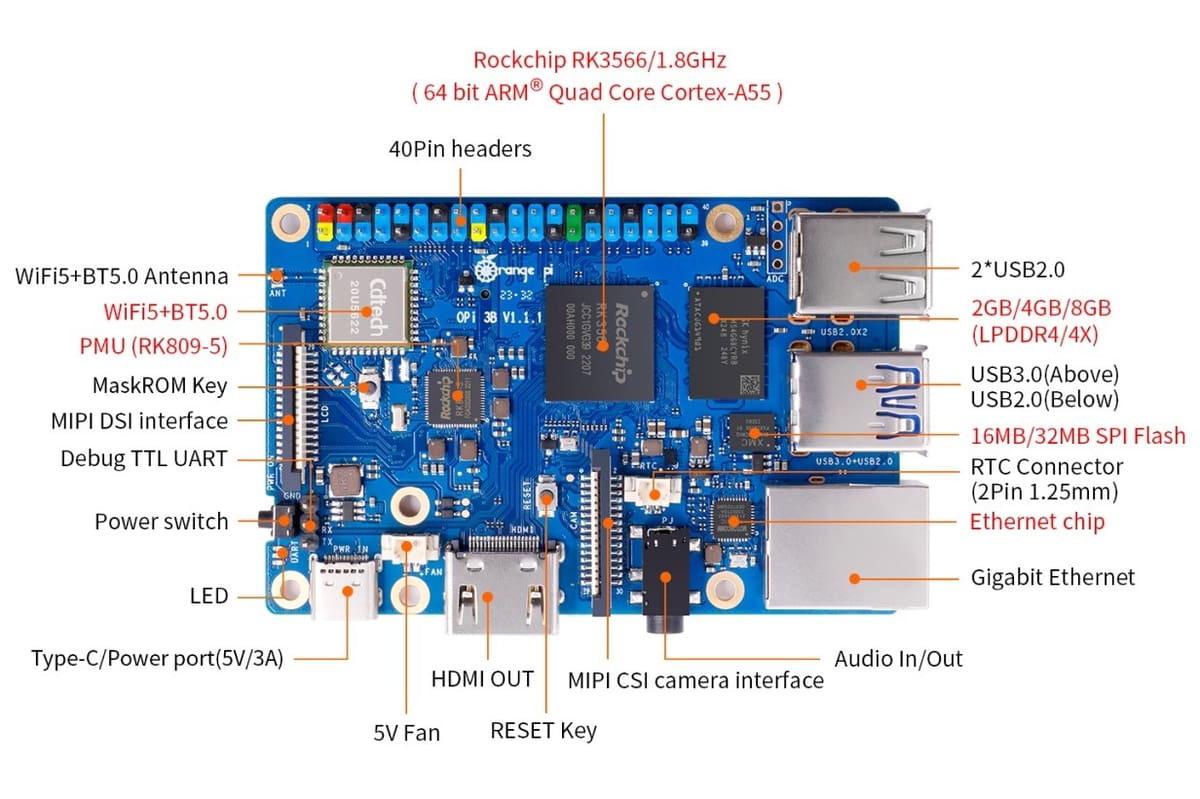
Here’s a look at the Orange Pi 3B’s important specs:
- Processor: 4-core 1.8 Ghz 64-bit Rockchip RK3566
- GPU: Arm Mali-G52 2EE
- NPU: 0.8 Tops INT8 performance
- Memory: 2, 4, or 8 GB (LPDDR4/4x)
- Storage: MicroSD (TF) card slot, eMMC socket, M.2 M-Key socket (optional)
- Wireless connectivity: Wi-Fi 5 + BT 5.0 BLE
- Ports and slots: 3x USB 2.0, USB 3.0, UART, PWM, I2C, SPI, 40-pin GPIO interface
- Size: 85 x 56 x 17 mm, 49 g
- Input Voltage: 5V 3A, Type C
Price
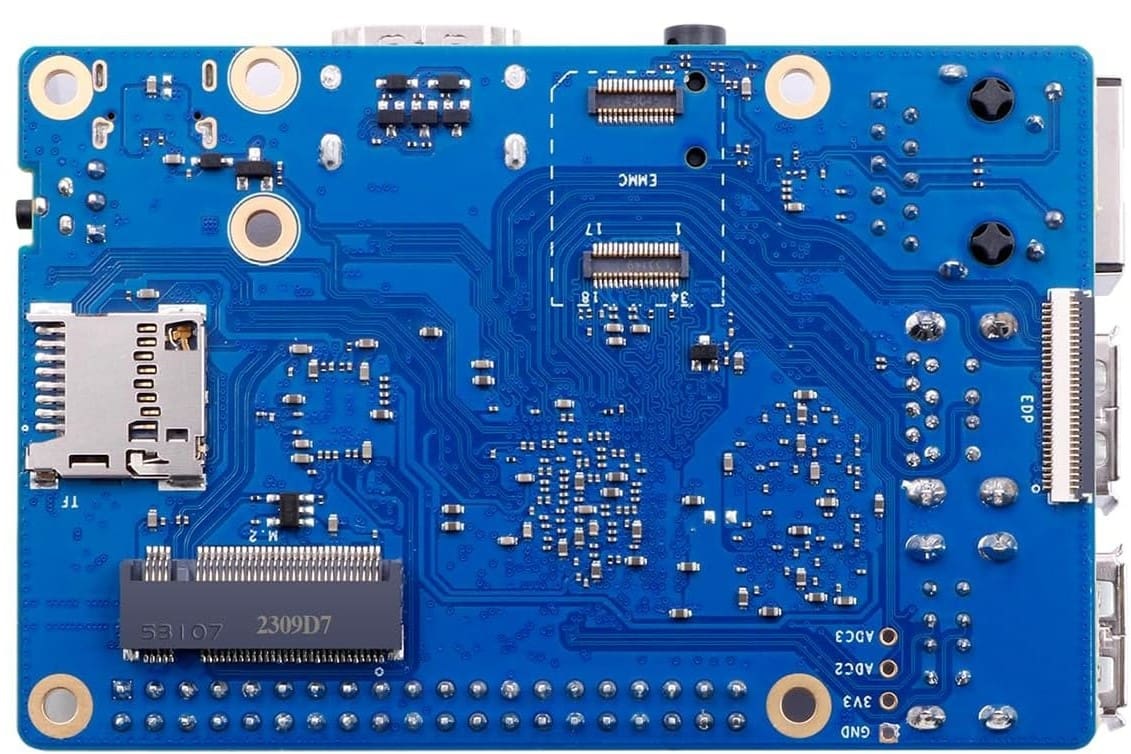
Let’s get to what matters! The Orange Pi 3B is an affordable SBC that you can find around the web.
It’s possible to find all memory options for this board with 2, 4, and 8 GB of RAM priced between $40 and $60. For the same RAM options with a 256 GB eMMC module, the prices are somewhere between $55 and $75 without the power source.
While the Raspberry Pi 4B with 2 GB of RAM can cost around $45, the Orange Pi 3B model with 8 GB of RAM typically comes in at the same price, with cheaper prices for lower RAM options.
The kit with a 32 GB eMMC module and 2GB of RAM starts at around $35, and a kit with a power supply and 256 GB eMMC module and 8 GB of RAM comes in at about $70. The complete kit with a power supply, acrylic case, cooler, heatsinks, and 256 GB eMMC module will cost you $75-80, although it varies between online retailers.
Similar Devices
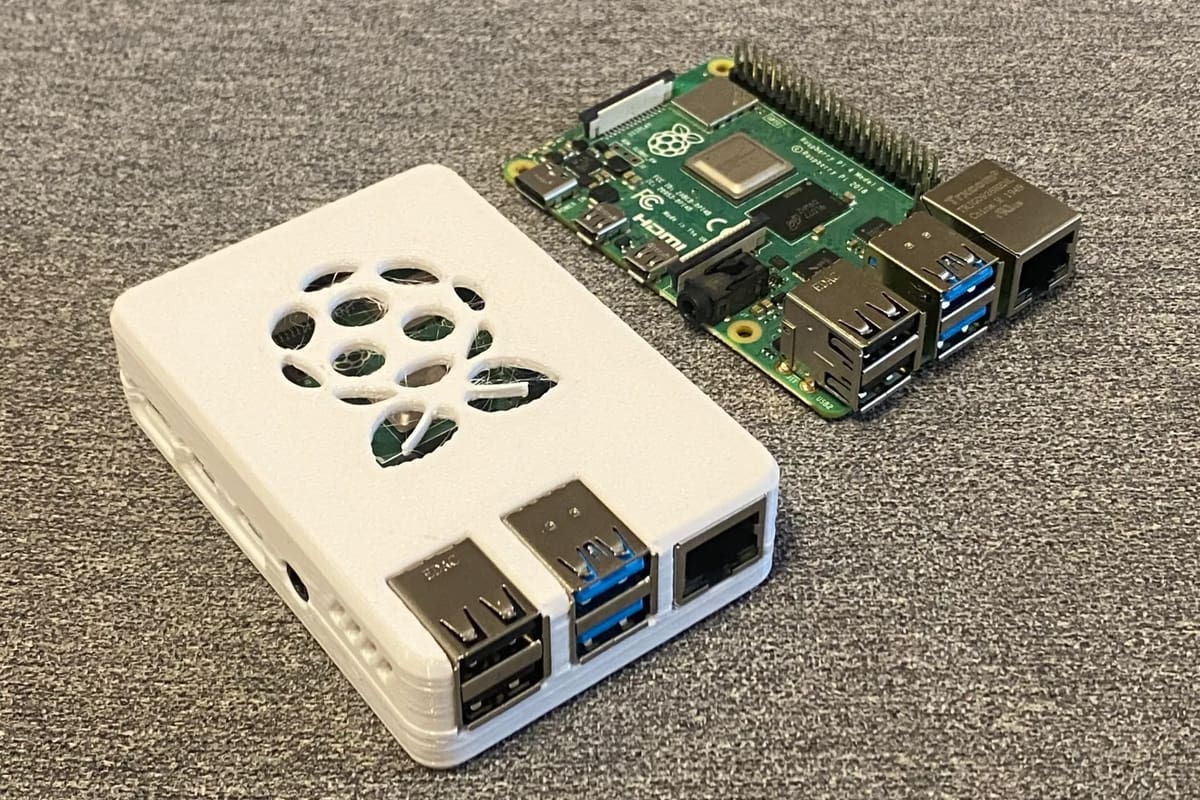
Next up, we’re taking a look at the competition. Here are some worthy alternatives to the Orange Pi 3B.
Raspberry Pi 4
The popularity and community support behind the Raspberry Pi 4 makes it a more attractive option than the Orange Pi 3B in many cases. In comparison, the price starts at $35 for the 1 GB RAM version, and increases by $10 for the 2 GB version, with options going up to 8 GB.
Nevertheless, this board boasts nice features, such as two micro HDMI video outputs, two USB 3.0 ports, and two USB 2.0 ports, along with a Broadcom BCM2711 Quad-core Cortex-A72 (ARM v8) processor. Both boards are practically the same size, but the Raspberry Pi 4 undoubtedly has a more robust graphics processing power, making it more suitable for games and applications that demand more video processing.
Radxa Rock 3C
Very similar to the 3B, Radxa entered the competition by presenting its differentiators, which include higher capacity storage and graphical performance. Even with a slightly higher price of $54 on online retailers, it still has its fans.
The main similarities of the Rock 3C include size, an M.2 socket, an eMMC socket, the use of only one USB 3.0 port against three USB 2.0 ports, and only one full-size HDMI port. Regarding performance, the Rock 3C loses in clock speed with only 1.6 GHz but excels in other aspects, such as NVMe storage of up to 1 TB.
Banana Pi BPI-M4
The Banana Pi is not as popular as the previous options but it’s gaining ground. It closely resembles the Orange Pi 3B, and also retails at a low price. The size of the two boards is similar, and there is an M.2 slot. However, the similarities end here. There are no USB 3.0 ports, and instead of a socket, you’ll find an onboard 8 GB memory. The RAM options are more limited, with only 1 GB or 2 GB, and there is no gigabit network port. Despite having fewer features, it can still be a good option for less demanding IoT projects.
License: The text of "Orange Pi 3B: Specs, Price, Release & Reviews" by All3DP is licensed under a Creative Commons Attribution 4.0 International License.
CERTAIN CONTENT THAT APPEARS ON THIS SITE COMES FROM AMAZON. THIS CONTENT IS PROVIDED ‘AS IS’ AND IS SUBJECT TO CHANGE OR REMOVAL AT ANY TIME.
